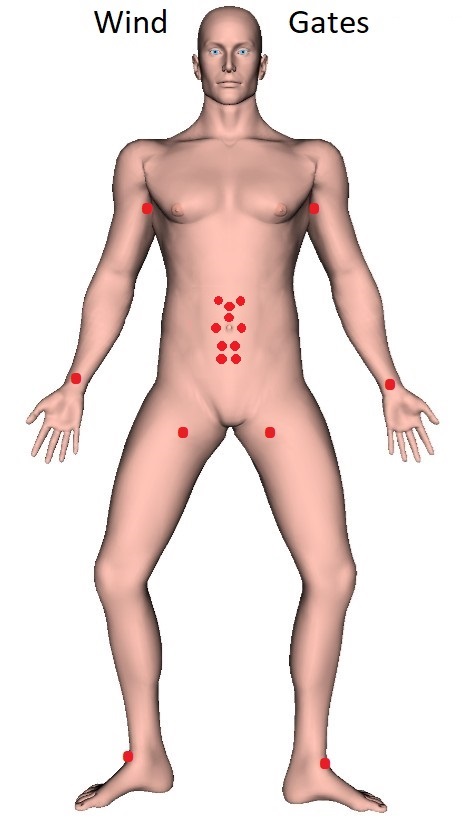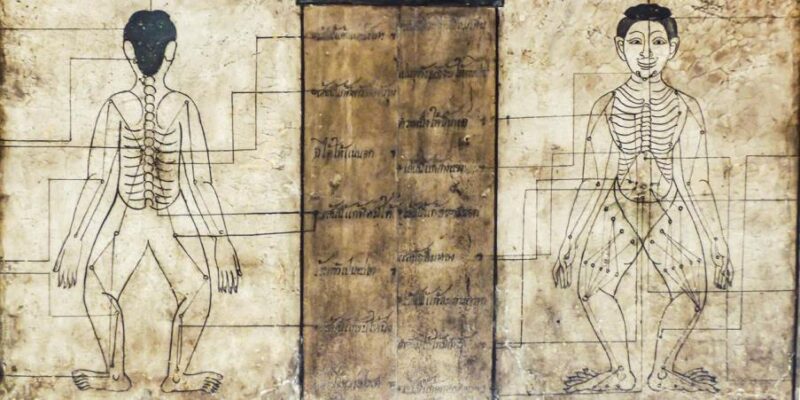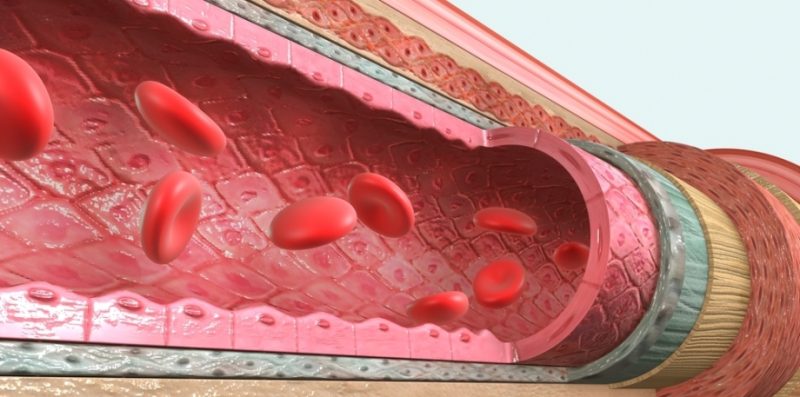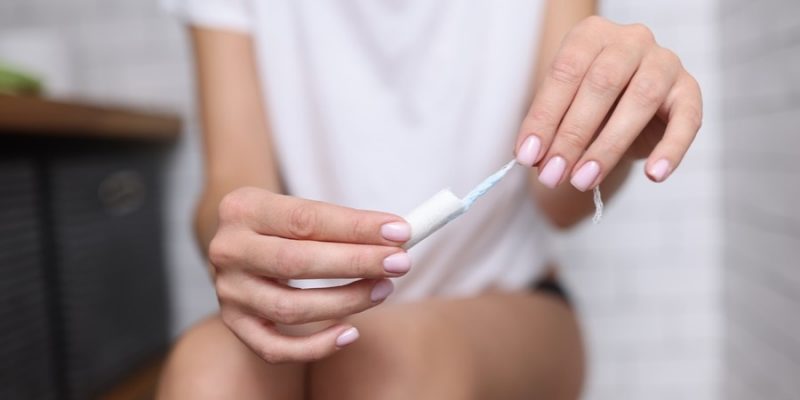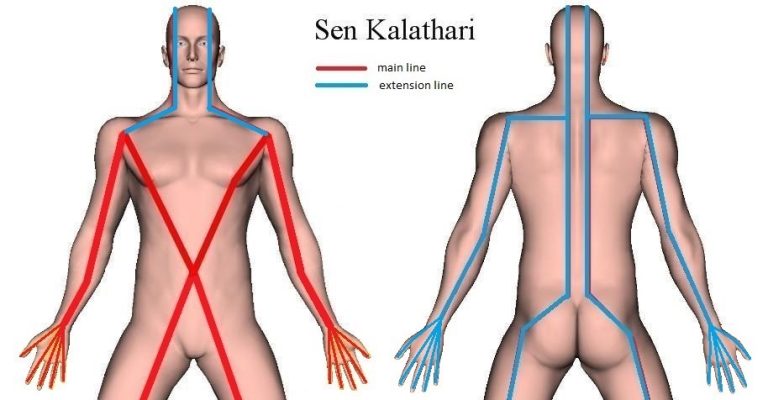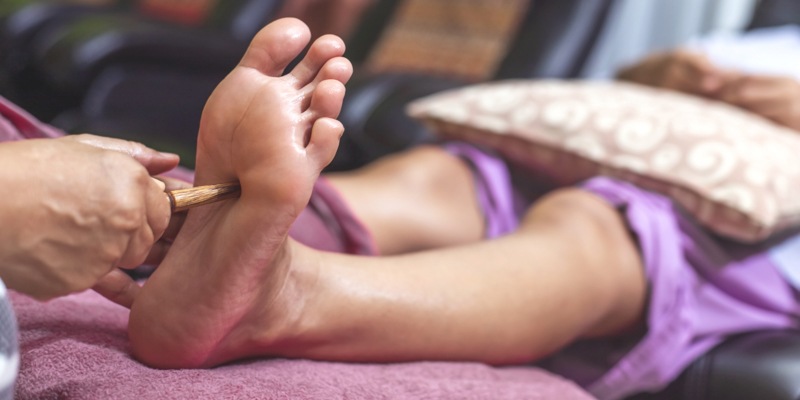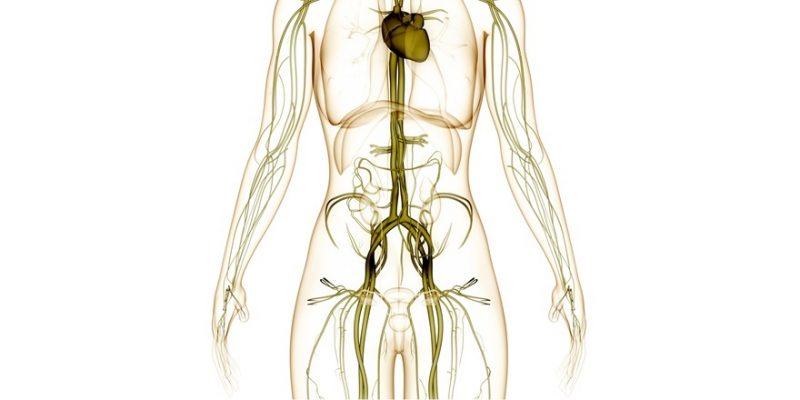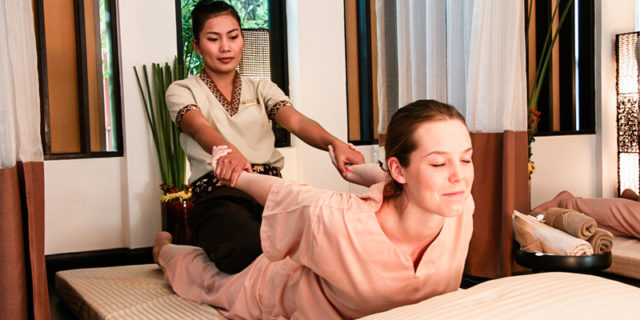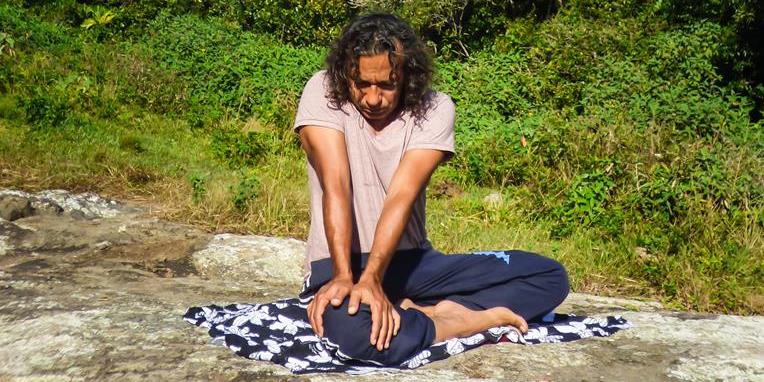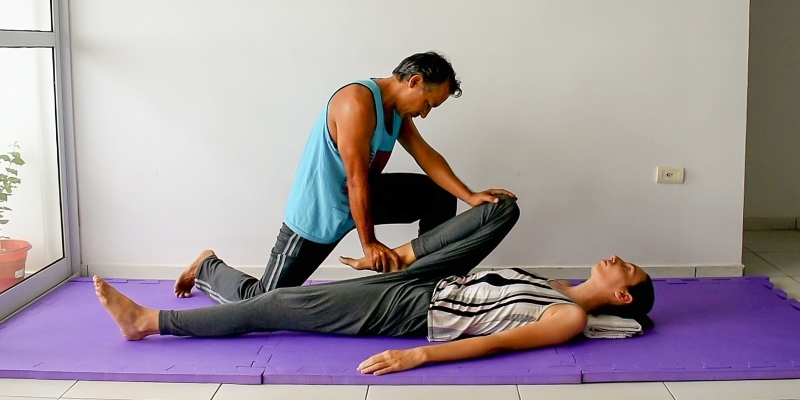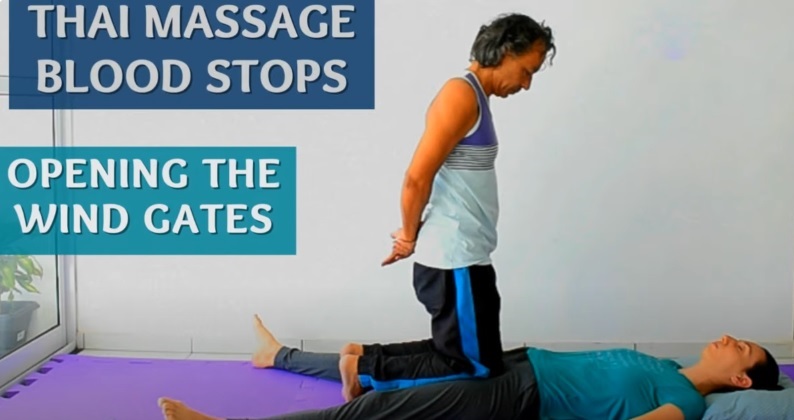
With regard to Thai Massage, you may have heard about the phrase “Opening the Wind Gates.” In Thailand, you will also hear teachers or therapists talk about “Blood Stops” or “Stopping the Blood,” which is the same. In fact, Blood Stops refer to an arterial compression technique, a technique also used in Yoga, by the way.
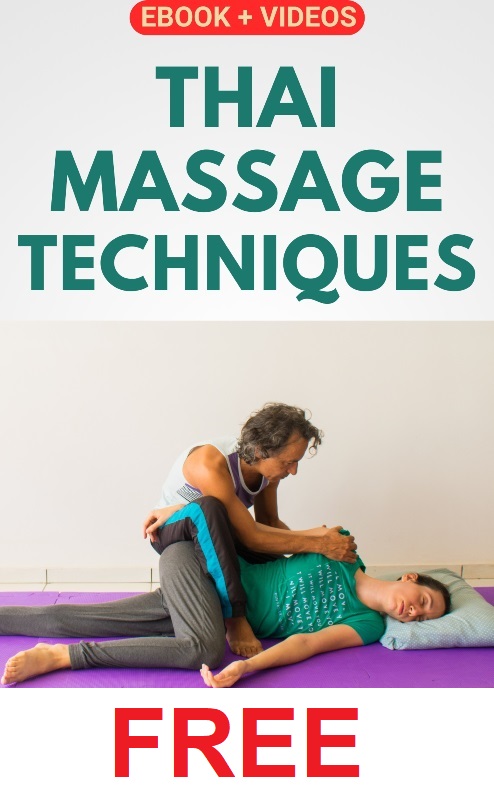
The concept of Opening the Wind Gates in traditional medicine systems (TCM, Ayurveda/Yoga, and Thai Traditional medicine) is connected to promoting an uninhibited entry and exit of Life force Energy in/out the body, hence ensuring its proper circulation through the body. In addition, the techniques used to “stop the blood” also have an obvious anatomical-physiological side to it on which we will focus further on in this post.
Now, of course, when carrying out a so-called Blood Stop the blood or blood circulation isn’t really “stopped.” What actually happens is that by using sustained pressure on certain key acupressure points, that is, certain “Wind Gates” of the body, in fact, at specific locations of certain arteries, we temporarily restrict (slow down and delimit) the normal flow of blood to the extremities (legs, feet, arms, and hands).
Because of the sudden rush and power-boost of fresh blood through the arteries, capillaries and veins after releasing the Blood Stop, the gates are relaxed, “opened” and widened, Life Force Energy flow is increased, residues of cells are flushed and toxins cleared out of the circulatory system, and nutrients and oxygen can better reach the deeper layers of cell tissues and extremities.

Blood Stops are done at locations on the arteries in the groins (femoral arteries) and near the armpits (axillary arteries), which are also more or less points on the second inside lines corresponding with Sen Kalathari in Thai Massage.
Arterial compression can also be done on arteries further near the extremities, such as near the wrists or on the top of the feet near the ankles, but also around the navel (umbilicus) where the Sip Sen Lines have their starting points.
In Thai Massage, there are certain rules of how long to “stop the blood,” depending on the type, size, and gender of the person. In general, Blood Stops are not performed longer than one to two minutes, and usually a shorter time for women than for men.
Moreover, there are strong contraindications to be taken into account. Blood Stops should not be carried out on people with circulatory or cardiac disorders, pacemakers, hypertension (even if they use medication against hypertension), varicose veins, heart disease, or on “quick bleeders” and pregnant women.
